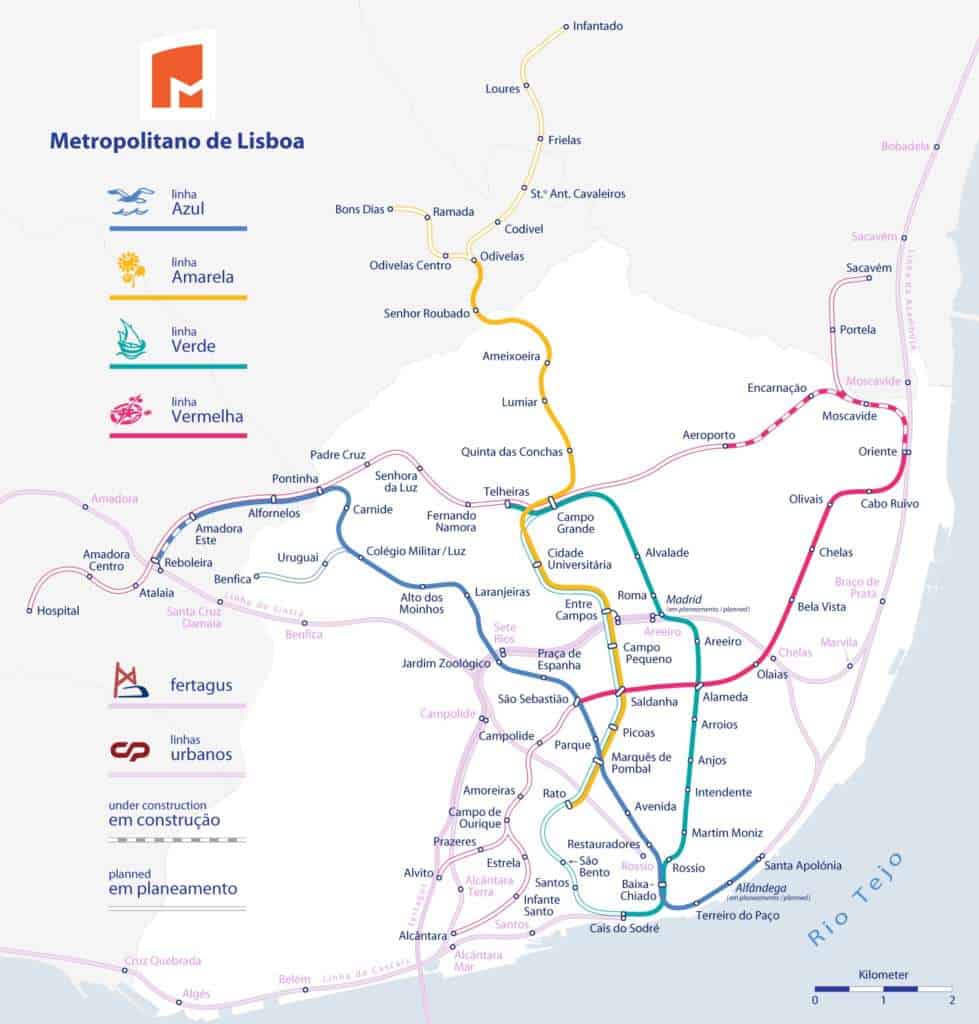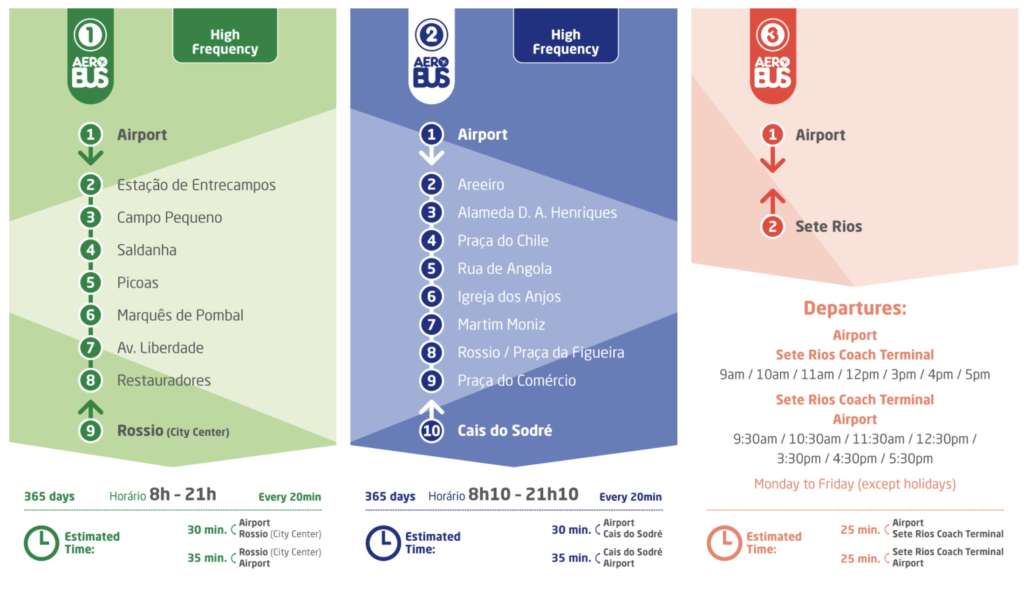Lisbon’s airport is located about seven kilometers northeast of the city center. In January 2019, the Portuguese government announced a plan worth more than one billion euros to expand the current port, as well as build a new airport in the sub-Lisbon city of Montijo. The construction of the new port has been criticized by naturalists and environmentalists due to plans to build on current nesting zones in the Tagus Valley.
Humberto Delgado Airport is now Portugal’s largest airport and Europe’s eighteenth largest in terms of passenger numbers. It handled 29,096,042 passengers in 2018 alone, an increase of nearly nine percent over the previous year. Over the past two years, the port handled a total of more than 115,000 tons of cargo. It is a vitally important European hub for Brazilian transfers, the Star Alliance consortium’s largest local hub for South America, and a hub for a great many African countries, including sub-Saharan Africa.
Lisbon airport terminal two
From Terminal Two at Lisbon Airport, all flights of operators referred to as “low cost” depart. – Ryanair, Wizzair, EasyJet, Norwegian, Transavia or Laudamotion. All of them land at the main terminal one – if you’re arriving in Lisbon, you don’t have to worry about a bus or connecting flights. If Lisbon Airport is your connecting airport, you’ll need to remember to book a transfer time including transportation to terminal two – a minimum of 25 minutes!
We can get to terminal two in two ways: either take a cab to T2 right away or use the free bus that starts near terminal 1. Buses leave evenly every ten minutes from the kiss&fly parking lot – we can reach it from the terminal or by taking the stairs right next to the subway entrance.
Terminal two is held to a lower standard than terminal one, both in terms of food and beverage offerings and comfort at the gates. Also, the air conditioning is often not working at security, which can make older passengers uncomfortable in a large hall with hundreds of passengers crowded together. Depending on what time you depart, you should reserve about 45 minutes to get through the gates.
Luggage storage at Lisbon airport
Baggage storage at Lisbon Airport is located in Terminal 1 in the arrivals hall, next to parking lot P2. The cost is 2.90 euros per day for up to 10 kg, 4.30 euros for 30 kg, 8.60 E for over 30 kg.
How to get from Lisbon airport to the city center?
Lisbon airport is well connected with the rest of the city. Right next to the building there is a stop of the red metro line – “Aeroporto” and a bus stop. By metro you can reach both the Oriente station (for trains to the Algarve or Porto), the city center or regional trains – to Sintra, Cascais or Setubal.
By metro to the city center
To get from the airport to Praça do Comércio, take the Metro Red Line train in the direction of São Sebastião and get off at the last stop (about a 20-minute ride). Then we need to change to the blue line (no need to go behind the gates, just walk to the second platform) in the direction of Santa Apolónia and get off at the Terreiro do Paço stop. The total cost of the trip will cost us 1.33 euros (zapping on Viva Viagem) or 1.50 euros + 50 cents for making a Viagem card (single ticket). To plan your transportation trip, I recommend the moovit.com app.

Cab from Lisbon airport
A cab trip to the city center costs about 10 – 15 euros. Personally, I recommend using mobile apps – the quality of cab services in Lisbon is quite low, and the cab drivers themselves often “rip off” tourists. In Portugal, Uber, Taxify, Kapten, Cabify and Free Now are available. The highest quality services are the latter two.
Aerobus from Lisbon airport
If you simply want to get from place to place at any time, taking the Aeurobus may also be a good choice. Lines one and two leave every twenty minutes, while the third line towards Sete Rios Station (buses towards Porto and trains towards Setubal leave there) leaves every hour.

A one-way ticket costs 4 euros, and children from 2 to 10 years old receive a 50% discount (2 euros). You can purchase your ticket from the driver or online. If you are arriving in high season, I recommend buying online. Sometimes the buses leave full, and there is a queue for the next one.
History of Lisbon Airport
The airport was opened on October 15, 1942 during World War II and initially operated in conjunction with the Cabo Ruivo hydroplane base. Such machines operated transatlantic flights, and passengers were transferred to continental flights from the plate of the new center. As a neutral airport, it was open to both German and British airlines, and was also a hub for smuggling people to, from, or out of war-torn Europe. As a curiosity, one can mention the 1942 film “Casablanca,” the plot of which was based precisely on an escape through Lisbon’s airport, which was closely monitored by both Axis spies and Allied spies.
The airport was opened on October 15, 1942 during World War II and initially operated in conjunction with the Cabo Ruivo hydroplane base. Such machines operated transatlantic flights, and passengers were transferred to continental flights from the plate of the new center. As a neutral airport, it was open to both German and British airlines, and was also a hub for smuggling people to, from, or out of war-torn Europe. As a curiosity, one can mention the 1942 film “Casablanca,” the plot of which was based precisely on an escape through Lisbon’s airport, which was closely monitored by both Axis spies and Allied spies.
By the mid-1950s, the number of passengers had reached one hundred thousand. At the time, archival diagrams show four runways arranged at forty-five degrees. Major improvements fifteen years after the Armistice included a new runway for aircraft capable of handling first-generation jets such as Boeing 707 and Douglas DC – 8. The first flight of this type belonged to Air France Caravelle. The debut direct transatlantic flight to New York was operated by TWA with a Boeing 707. Shortly thereafter, five large parking bays were built and the terminal was rapidly expanded. The airport’s next renovation began after another two decades.
Roughly since 2004, the European Football Championship, there has been a gradual modernization and continuous improvement of Lisbon Airport. Several years later, the port and neighboring structures have undergone a series of major structural and equipment changes or expansions. These included the construction of a second center, renovation of lighting, baggage claim stations, new loading facilities, fuel storage, a northern pier, a waiting area, a northern bus ramp, enlargement of express infrastructure facilities, electronic innovations, refreshing of the departure hall, metro stations and other modifications to the old core, all of which were happily completed. As part of the government’s strong support for the capital’s airport, a new shopping area was inaugurated in July 2013, with more than twenty new stores and spacious, naturally lit interior circulation areas. Two years later, the restaurant region was expanded.

Witam. Czy bilet 24h jest ważny również na tramwaj 28? Czy bilet 24h trzeba kasować przy każdym wejściu do tramwaju, autobusu? Pozdrawiam serdecznie.
Dzień dobry, bilet jest ważny na tramwaj 28, a także np. windę Santa Justa. Bilet 24h kasujemy 1 raz. Bilet ważny jest 24 godziny od skasowania.